Propane gas is an excellent solution for energy-intensive jobs such as heating water and warming the air in your Airstream or other brand of RV.
But gas is one of those things – like snakes, heights, and needles – that freaks a lot of people out. The rationale is that a gas leak can potentially cause an explosion or fire – which is true, but rare. If you’re one of those freaked out RVers, we hope this guide will calm your fears. Once you understand how many safety mechanisms are built into the gas system of an RV, you’ll realize how few safety risks exist with today’s modern propane gas systems.
This quick guide also covers the basic tasks of maintaining the propane system and includes guidance on the steps you should take if you smell gas.
Here’s what we cover in this practical guide:
- 5 Reasons Why Propane is Safe
- Why We Recommend a Safety Shut Off Device
- Basic Propane Maintenance and Inspection
- What to Do if You Smell Gas
- General Propane Safety Tips
For complete details about your specific RV model’s propane system, please consult the Owner’s Manual.
Download PDF
5 REASONS WHY PROPANE IS SAFE
Because propane is so widely used, the appliances and equipment that use it come with a number of safety features already built-in. Regardless of the type of RV you travel in, you can rest easy knowing that these five gas safety mechanisms are already in your unit.
1. Propane smell
Everyone knows that propane gas has a distinctive smell that makes it obvious a problem is brewing. Because the smell is added during refinement, every tank of propane you buy will have a consistent, identifiable smell.
2. Propane gas leak detector
Even if you can't detect a propane smell, or if you are away from the RV when a leak occurs, this device will smell it for you. Every RV brand that uses propane gas appliances is required to have a standard with a propane gas leak detector. This device is located down low, near the floor, and can't be turned off (for safety reasons). It sniffs for gas constantly, whenever 12 volt power is available from the batteries.
Here's an example location of this leak detector:
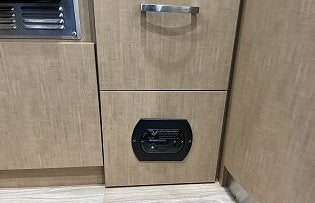
There are no specific maintenance tasks related to the propane leak detector, but it will need to be replaced typically every 7 years – or more, depending on the brand. For more detail about this device and when to replace it, watch this video. This topic is also covered in The (Nearly) Complete Guide to Airstream Maintenance.
3. Gas auto-shutoff feature
Most of the appliances that burn propane (water heater, furnace, refrigerator) will automatically turn off if they can't light the gas. That's to prevent unburnt gas from accumulating if there's an ignition problem.
4. Self-sealing connections
Most of the brass connections (fittings) in the propane system are designed to self-seal. Known as "flare fittings,” they keep gas from leaking when properly tightened.
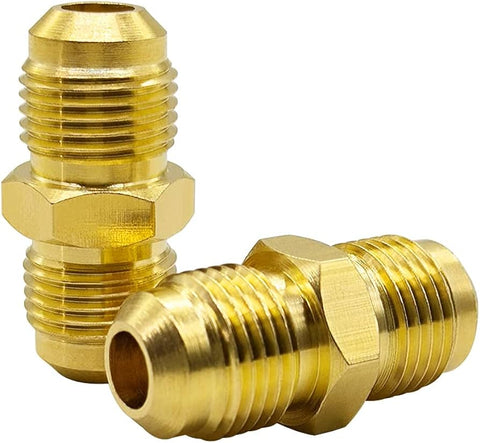
In addition, connections in the gas system are routinely tested for leaks by the technician any time they are serviced. You can easily test the connections by doing a soapy water test, which is explained below and also at 3:30 in this video.
5. Over-Pressure Device (OPD) valves
Each propane tank on an RV is equipped with OPD valves, which prevent them from being overfilled, and prevent the flow of gas if there is no hose connected.
NOTE: Contrary to popular belief, the OPD valve doesn't prevent gas from flowing when a hose is connected. So, if you're driving down the road and have an accident which causes one of the gas lines to break open, or a rodent chews through the lines, the OPD won't help you. That’s why a safety shut off device is an essential piece of gear for any RVer.
WHY WE RECOMMEND A SAFETY SHUTOFF DEVICE
All of the preceding safety mechanisms are intended to keep the use of propane safe while you enjoy your RV travel experience. They’ll keep gas from errantly leaking out of the system, and alert you when there is a slow leak.
But what happens if you are in a traffic accident, if rodents chew through a gas line inside the RV, or road debris nicks or tears the gas line that runs underneath most travel trailers? Any of these situations can result in a major gas leak – an open line that’s spewing propane.
For this reason, we recommend installing an automatic gas shutoff device. GasStop Safety Shutoff is the only device currently on the market that immediately and automatically shuts off the flow of gas when there is a major leak.
We use this shutoff device ourselves and suggest it to all RV owners – especially anyone who travels with the gas on. Although safety experts warn against this, if you have a gas or gas-electric hybrid refrigerator, you likely travel with the propane running to keep your food and beverages cold. In this case, the GasStop Safety Shutoff device is the peace of mind device that will keep you safer.
If you own an Airstream, we recommend our GasStop Installation Kit for Airstreams – which includes a braided stainless steel hose and all the parts and instructions you need to install GasStop underneath the propane cover.
BASIC PROPANE MAINTENANCE AND INSPECTION
Maintaining the propane system is not complicated and doesn’t require any special skills. And the only equipment you’ll need for the following four recommended maintenance and inspection tasks is a small bottle of soapy water, a wrench, and your Departure Checklist.
1. Use a Pre-Departure Checklist
No matter how experienced you are, checklists are vital to making sure you don’t miss an important step. The checklist should include verification that the stove and oven are fully turned off before you leave your campsite. Perform this safety check even if you haven't used the stove or oven, because sometimes the knobs get accidentally knocked open.
2. Perform a slow gas leak check every time you remove or return your RV from storage.
The easiest way to do this is using the GasStop Safety Shutoff. In addition to its primary function of automatically shutting off the flow of gas if there is a major leak, the device is ideal to use for identifying a slow leak. The procedure is explained in this video:
3. Inspect the propane hoses regularly and replace them before they leak.
Rubber propane hoses typically last 2-3 years. Inspect them by testing for stiffness and looking for cracks in the rubber, like those shown in the photo below.
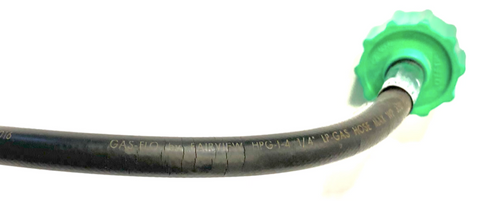
We've seen many old propane hoses that are as stiff as concrete and show surface cracking. This is evidence that a dangerous leak could occur. Don’t let your propane hoses get to this state. Inspect and replace them before they fail. If replacement is needed, consider upgrading from rubber to stainless steel braided propane hoses.
4. Perform a “soapy water” test if a leak is suspected, OR any time you take a propane connection apart (except for routine propane refills).
For example, every time you swap out old propane hoses for new ones, or install a new appliance.
The simplest way to perform this test is to fill a small bottle with water and 2-3 drops of dish soap. Squirt 3-4 pumps of the solution on each of the threaded brass connections, and examine it from all sides.
If a bubbling begins to occur at the connection, you’ve got a leak. What you’re looking for is bubbling that is continuous (not a few bubbles after you squirt, which are often small water droplets). See the photo below for an example.
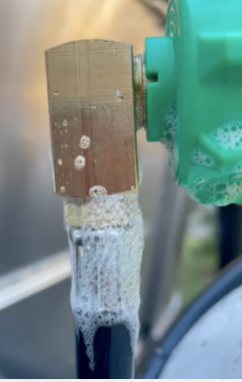
If you’ve never done a soapy water test, watch how the procedure is performed, beginning at 3:30 in this video.
When you perform the soapy water test, make sure to test all connections that have been taken apart or are suspected to be leaking, including those to the:
- Water heater
- Furnace
- Stove
- Gas regulator
- Other appliances you may have installed, like a catalytic heater
The only connection you do not need to test with soapy water is the green knob on the tanks. Just hand-tighten it until it stops.
WHAT TO DO IF YOU SMELL GAS
If the gas smell is coming from near the propane tanks / under the tank cover, don’t panic. It's pretty common to have minor leaks in this area, and sometimes there’s a residual smell in this area even without a leak.
- Double-check that the big green knobs connecting the propane hoses to the propane tanks are fully tightened.
- Perform a soapy water test on the hose ends and all other connections, such as the threaded brass connections to the regulator and where the propane hoses have a crimped steel fitting. That’s the part in the yellow circle in the photo below.
If you’ve identified a leak at the crimped edge, replace the hose. Don’t try to repair it.
If the smell is coming from inside the RV, safety first! Get out, leave the door open, and turn off the gas at the tanks. Let the gas dissipate before going back inside. If you can't easily find the source of the leak (like accidentally leaving the stove on), leave the tank valves closed and don't use the gas again until you've had a technician check it out.
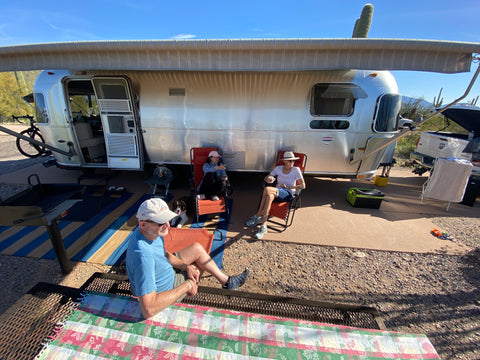
If you're on the road and there's no Airstream or specific-to-your-RV brand service center nearby, you can go to any competent RV service center since most RVs use the same gas components.
Important to know if you own an Airstream: these service centers can't file a warranty claim. So if your rig is still under warranty, call Airstream first at 937-596-6111 to obtain authorization and advice.
GENERAL PROPANE SAFETY TIPS
1. If you transport the propane tanks in your truck, always keep them upright so that the Overpressure Device (OPD) can work properly.
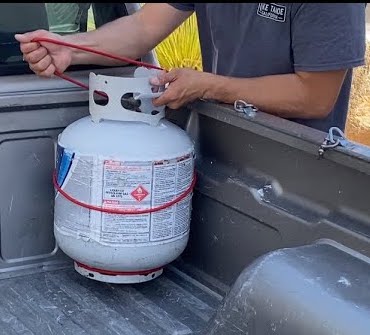
2. Don't leave propane tanks inside a car or truck.
The OPD valve is designed to vent gas if the pressure gets too high, and this could happen in a hot vehicle.
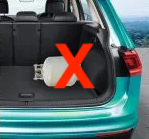
3. Replace the Propane Leak Detector inside your RV after 7 years.
Newer RV models have a built-in alarm to let you know when they have reached their expiration date, and Airstream also puts a small sticker above the detector to show when it was installed (but this sticker may have been removed since). If you're not sure and your RV is more than 7 years old, play it safe and install a new Propane Leak Detector. You’ll find options at RV parts stores, dealerships, Amazon, and other retailers.
4. If you are manually lighting any appliance (stove, oven, or the pilot on a vintage refrigerator or water heater), follow the instructions exactly.
Avoid letting gas accumulate. If the appliance doesn't light promptly, stop, ventilate, and re-read the instructions (or get help).
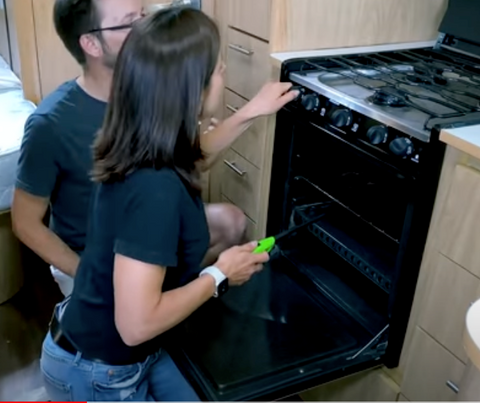
Propane is quite safe in an RV—as long as you let the safety devices do their jobs, and take just a few simple precautions. Have a healthy respect for the power of propane, maintain and inspect your system, and you’ll be safer on the road.



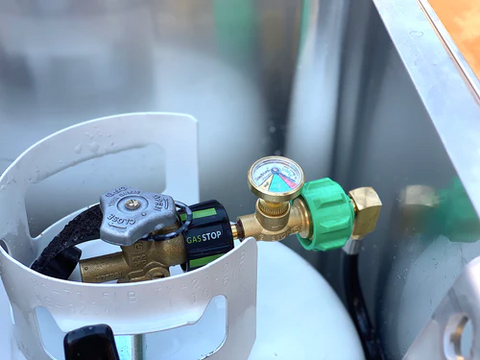
4 comments
Rick Bullotta
A couple other tips: the regulators in these rigs see lots of varied temperatures, humidities, and varying quality of fuel. Ours crapped in only about 18 months. If you’re not getting adequate pressure/flow at your appliances, suspect the regulator. An easy way to test is to light one stove burner, then turn the rest on high. If they can’t maintain a tall flame, pressure or flow is low. We thought we had a bad sail switch because the heater kept cutting out – and it turned out to be a bad regulator instead.
Rich Luhr
Rick B: Thanks for the comment. What you’re describing gets more into “repairs” than “maintenance”, but I do agree that the regulator can be a source of problems for gas appliances. We bought a new Airstream in 2020, and the regulator was dead on arrival (despite the dealership insisting they’d done a thorough Pre-Delivery Inspection). In other cases, I’ve seen regulators that lasted for decades.
The best way to test and adjust a gas regulator is with a manometer, which most people don’t have. It’s very difficult (and often misleading) to try to evaluate the regulator by looking at a pilot light. So if someone suspects the regulator is causing problems, it’s best to get it evaluated by a competent technician with the correct tools. They are designed to be adjustable so that the flow of gas is precise. There’s more about this in my book, “The (Nearly) Complete Guide to Airstream Maintenance”.
Robert Heston
Should LP Tanks be replaced if the have seals in the fill point that are worn and won’t allow the tanks to fill – or is there someplace one should take the tanks to have the seals replaced?
I have a 2019 Classic 33’ and almost overnight one tank went from full to 47% while the other was at 50% and it went to 2%. The tanks are only 6 years old so they shouldn’t need to be replaced but if that’s what I have to do I will.
Suggestions?
Rich Luhr
Robert, I wouldn’t jump to the conclusion that the problem is worn propane tank seals. It seems unlikely that the seals on both tanks, only 6 years old, would suddenly start to leak to the point that the tanks can lose half their capacity overnight.
But if it is the seals (which are actually O-rings), replacing them is straightforward, and yes, there are full-service propane service centers that can do that for you. Any propane fill station is required to inspect your tanks before filling them, so they can tell you if the seal is missing. The O-ring is easy to see.
For more info about the seals and how to replace them, see this article (not by us):
https://thecampingadvisor.com/how-to-replace-the-rubber-seal-on-a-propane-tank/
My concern is that you may have a serious (DANGEROUS) leak somewhere else in the system. It could be at an appliance, the regulator, or anywhere in between.
An RV tech can check the rest of the propane system for you, and it would be wise to have that done. You can also do a “slow leak check” yourself. See instructions on this page:
https://www.airgear.store/blogs/maintenance-and-inspection/dont-skip-this-propane-system-inspection
Regardless of the suspected cause, you should make resolving this your highest priority. A gas leak like that is nothing to take lightly.